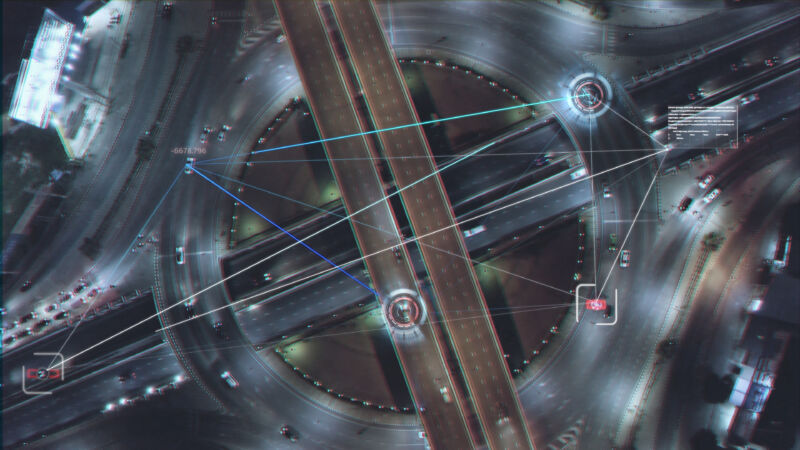

To save lives, issue connected vehicle technology waiver, NTSB tells FCC
source link: https://arstechnica.com/cars/2022/08/ntsb-wants-fcc-to-deploy-safety-tech-in-remaining-5-9-ghz-bandwidth/
Go to the source link to view the article. You can view the picture content, updated content and better typesetting reading experience. If the link is broken, please click the button below to view the snapshot at that time.

not dead yet —
To save lives, issue connected vehicle technology waiver, NTSB tells FCC
The FCC left 30 MHz of bandwidth for C-V2X applications.
Jonathan M. Gitlin - 8/30/2022, 3:44 PM

In mid-August, the Federal Communications Commission succeeded in its long-held plan to reallocate a portion of the spectrum from car-to-car and car-to-infrastructure communication (known as V2X) to Wi-Fi instead. However, the FCC didn't reassign that entire region of bandwidth—30 MHz remains set aside for "intelligent transportation systems." And the FCC should grant automakers a waiver to allow them to start deploying cellular-based V2X (C-V2X) safety systems, said the National Transportation Safety Board in a letter it sent the FCC on Monday.
The saga of V2X is a long-running one. The FCC originally saved the spectrum around 5.9 GHz for use with V2X in 1999, but despite keen interest from some automakers and industry groups like the American Association of State Highway and Transportation Officials (AASHTO) and the Intelligent Transportation Society of America (ITS America), the technology still has not been deployed.
Seeing that failure, the FCC decided in 2020 to reallocate some of the bandwidth to Wi-Fi, leaving the frequencies between 5.895 and 5.925 GHz for V2X. ITS America and AASHTO sued the FCC to prevent this, but the US Court of Appeals for the District of Columbia ruled in favor of the FCC in August, allowing the commission to go through with its plan.
AdvertisementNTSB says C-V2X is A-OK
This has dismayed the NTSB, which has written to the FCC as part of the commission's public comment period as it considers a waiver requested by automakers to deploy C-V2X technology. Conceptually, C-V2X works the same as the older V2X—direct vehicle-to-vehicle or vehicle-to-infrastructure communication but using cellular radio protocols instead of the dedicated short-range radio communication protocol.
The FCC should grant this waiver, said the NTSB, which notes in its letter that it has recommended that the nation adopt wireless-based collision-avoidance technology since 1995. Connected vehicle technology would reduce the ever-escalating carnage on US roads, said the NTSB, and the agency also urged the FCC to make sure that Wi-Fi devices don't encroach on the remaining 30 MHz of intelligent transportation system frequencies.
"30 MHz is enough for basic safety features," said Balázs Tóth-Pintér, a communications specialist with V2X company Commsignia, who pointed out that the EU has only allocated a total of 40 MHz for V2X. And unlike in the US, deployment is happening in Europe. "This year, we'll see approximately 1 million V2X cars in Europe. The expected penetration will be in the 10 million-ish range by around 2024–2025," he told Ars.
Tóth-Pintér also noted that the court's decision only added clarity to the field and that Commsignia has "been working on that 30 MHz since the FCC made its decision almost two years ago. We deliver equipment with both DSRC and C-V2X included, so changing the physical network layer is not a big issue. Now we can go full speed ahead with deployments," he said.
Promoted Comments
-
tlusco Smack-Fu Master, in trainingjump to postNHTSA wrote a rule requiring V2V in all new cars and asked for public comment. It did not move forward. This was back in 2016 IIRC. Regulation became impractical with the new administration in 2017.
GM dabbled with V2V in the 2017 Cadillac CTS. A bit later in 2018, Toyota publicly committed to deployment in all new cars for the 2021 model year, but shortly thereafter the FCC commented to Toyota that the spectrum was under consideration for reallocation. So Toyota backed off. The FCC's reallocation of spectrum later used the "there's minimal deployment" as justification for taking away spectrum.
On Privacy: all messages from private vehicles are pseudonymous, with rotating identifiers. It is possible to track, but it is hard. If you want to track a private vehicle, its far easier to work with a static identifier. You know, like the one your cell modem has. Or your Bluetooth chip. Those things are in your car *today*, and those things are used with commercial sensing tools today. The tracking argument is over.
The NTSB has documented scenarios where V2V would have saved lives. Traffic fatalities in the United States have risen sharply, up to 42,915 last year. V2V would have saved some of those lives. That's what we should all be talking about. -
sitmonkey wrote:The Cell Radio frequencies are long range in comparison.AIUI "C-V2X" is actually still operating in the 5.9GHz region, just with a protocol stack derived from cellular telephony standards rather than a purpose-built one.
For privacy and congestion purposes, the Cell Radio range just feels inappropriate compared to the short range option.
Recommend
About Joyk
Aggregate valuable and interesting links.
Joyk means Joy of geeK